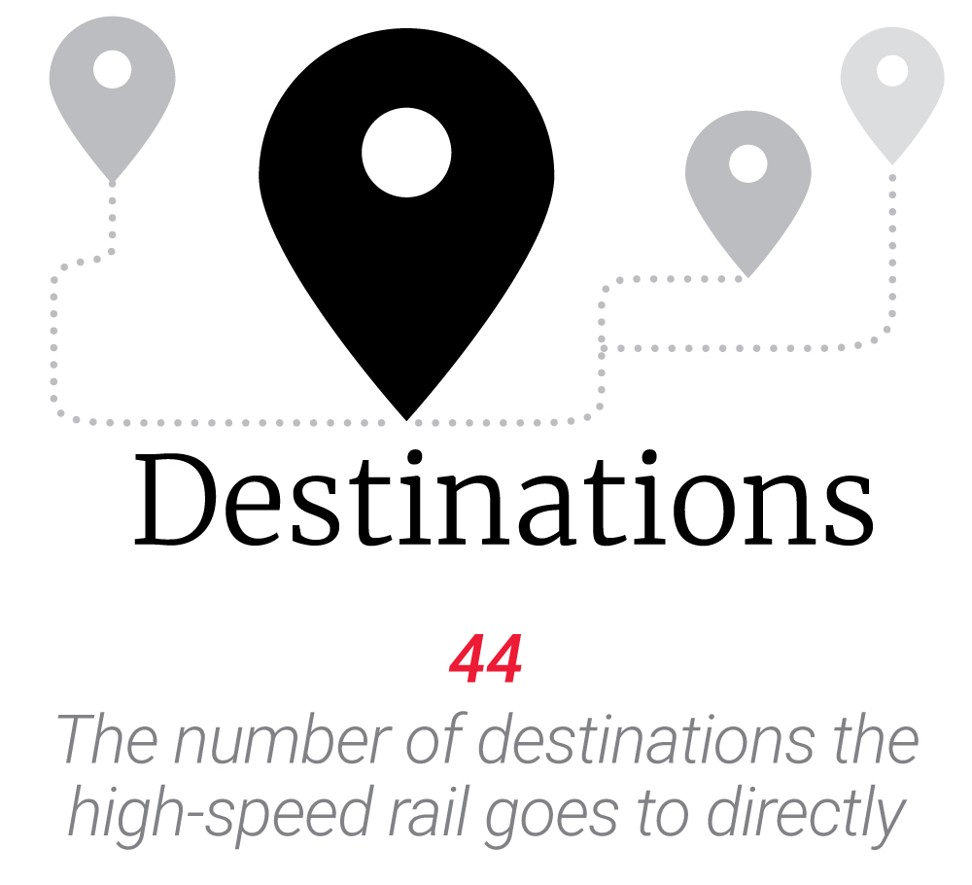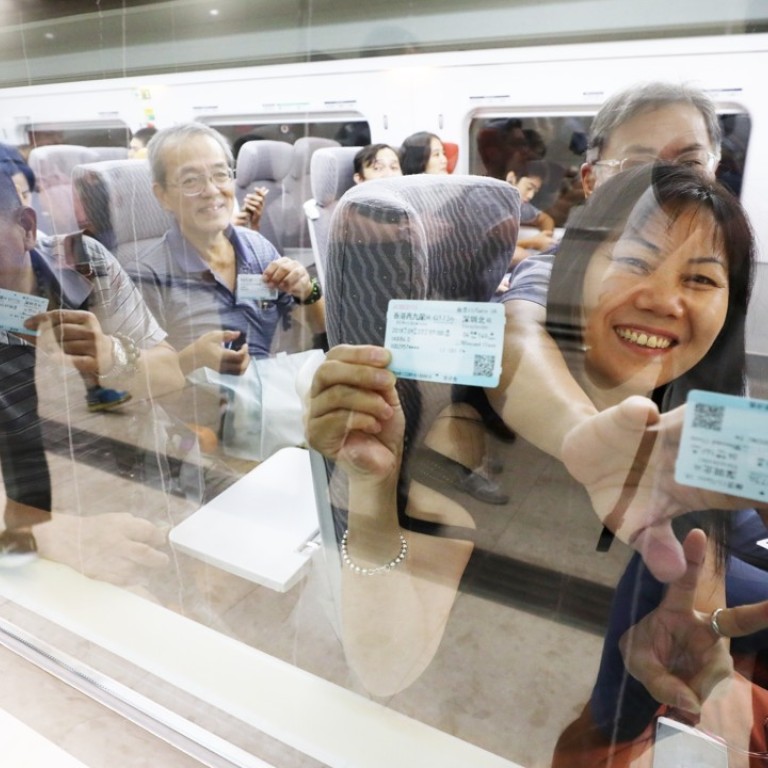
Luggage and ticket confusion as Hong Kong's high-speed rail service to mainland China opens
City’s HK$84.4 billion section of cross-border link runs inaugural trips from West Kowloon station
The first day of passenger services on Hong Kong’s high-speed rail link to mainland China was marked by periods of confusion over baggage rules and large queues as travellers struggled to get their hands on pre-ordered tickets.
The first train on the HK$84.4 billion (US$10.8 billion) local section of the Guangzhou-Shenzhen-Hong Kong Express Rail Link, which set off at 7am on Sunday, arrived at Shenzhen North at 7.19am. A train from Shenzhen to Hong Kong pulled in at about the same time.
Li Zheyao, a Shenzhen resident in his 20s, took the first train from Shenzhen at 6.44am to visit Hong Kong on his own. He voiced satisfaction with the ride.
“When I heard about the opening of the high-speed rail, I really wanted to witness this historic moment. Since I couldn’t find friends to accompany me I had to come alone,” he said, adding that he planned to stay in Hong Kong for two days.
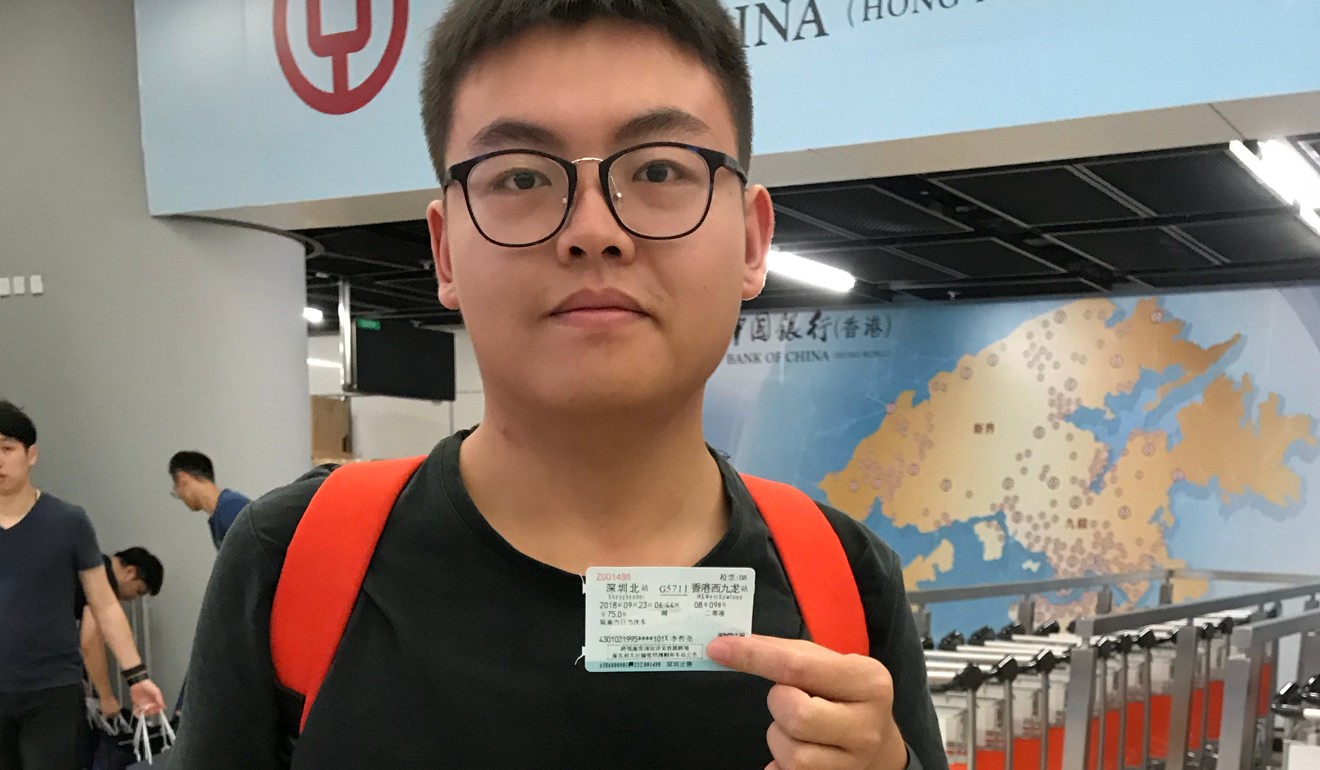
He described the ride as comfortable and the immigration checks as smooth.
Another young passenger, from Guangzhou, said he spent the night in Shenzhen on Saturday just to take the first express train to Hong Kong.
“It was very fast and very stable,” he noted.
Travelling with his wife, daughter and domestic helper, Lai said he had spent about HK$4,000 (US$512) on tickets to Wuhan, Hubei province. He was upset that MTR Corp staff told him to move his belongings to a carrier bag and store the suitcase at the station.
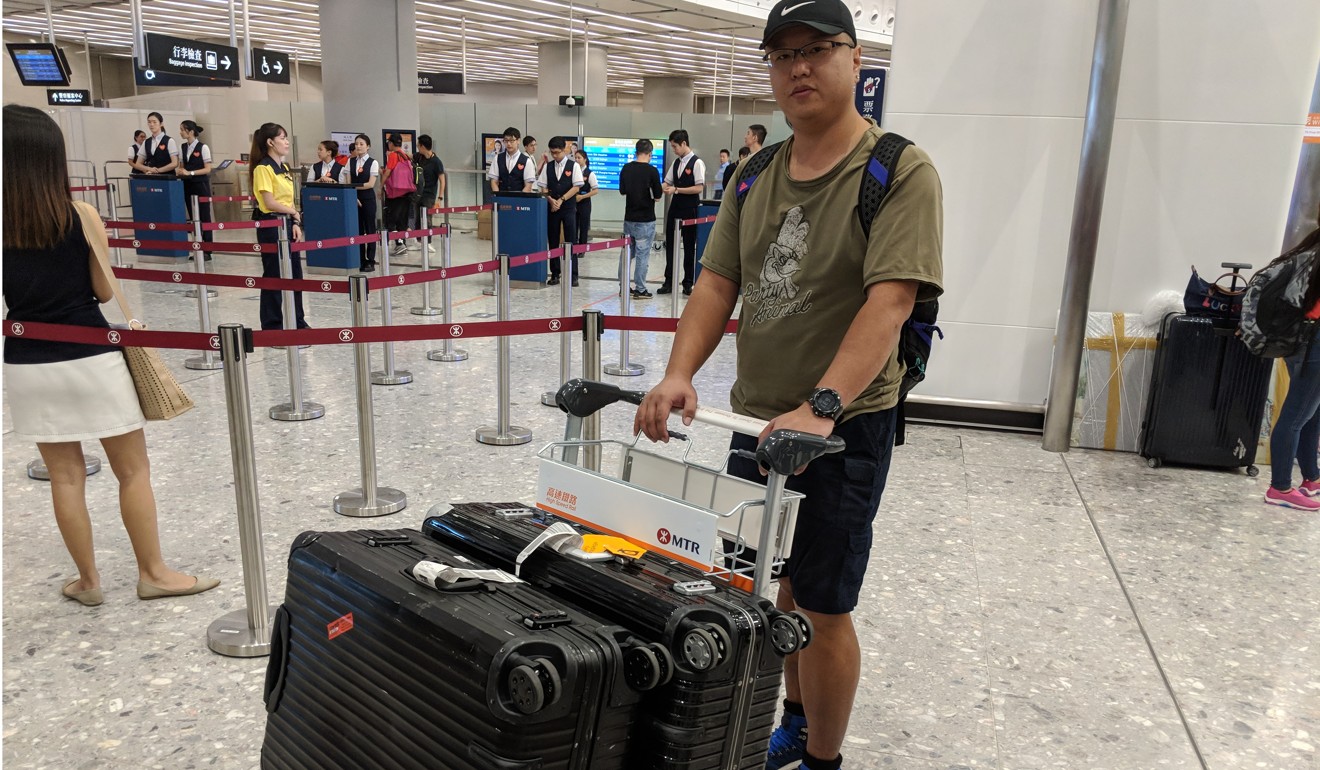
“How can I carry this bag on the trip? Just use your brain,” Lai said. But he conceded he was “not completely right”, as he had not read the rules before Sunday.
The corporation set up booths at the station to let passengers transfer their belongings to carrier bags in private. Passengers could also ship their excess baggage to their destination through a delivery company.
It takes 18 years to nurture a fine man and now, 18 years from the conception of the idea, the express rail is finally born, marking the beginning of a new life
MTR Corp operations director Adi Lau Tin-shing said only a small number of passengers had to move their belongings from oversized luggage to carrier bags.
He added the size restrictions on luggage for passengers from Hong Kong were in line with mainland restrictions. But he admitted some southbound passengers from the mainland arrived with oversized luggage.
Soon before 10am, the ticketing hall became very crowded. Some passengers who had booked via mainland ticketing portal 12306 said they were confused as to how to obtain their physical ticket.
Long queues formed outside ticket booths. MTR Corp staff led some passengers directly to the departure gate, telling them there was no need to claim a physical ticket if they had bought one via 12306.
Lau said some passengers who bought tickets from the site had not set out enough time to redeem their paper ticket.
“Our main objective is to find a way to allow these customers to continue their journeys,” Lau said, adding that more people than expected had showed up at the booths.
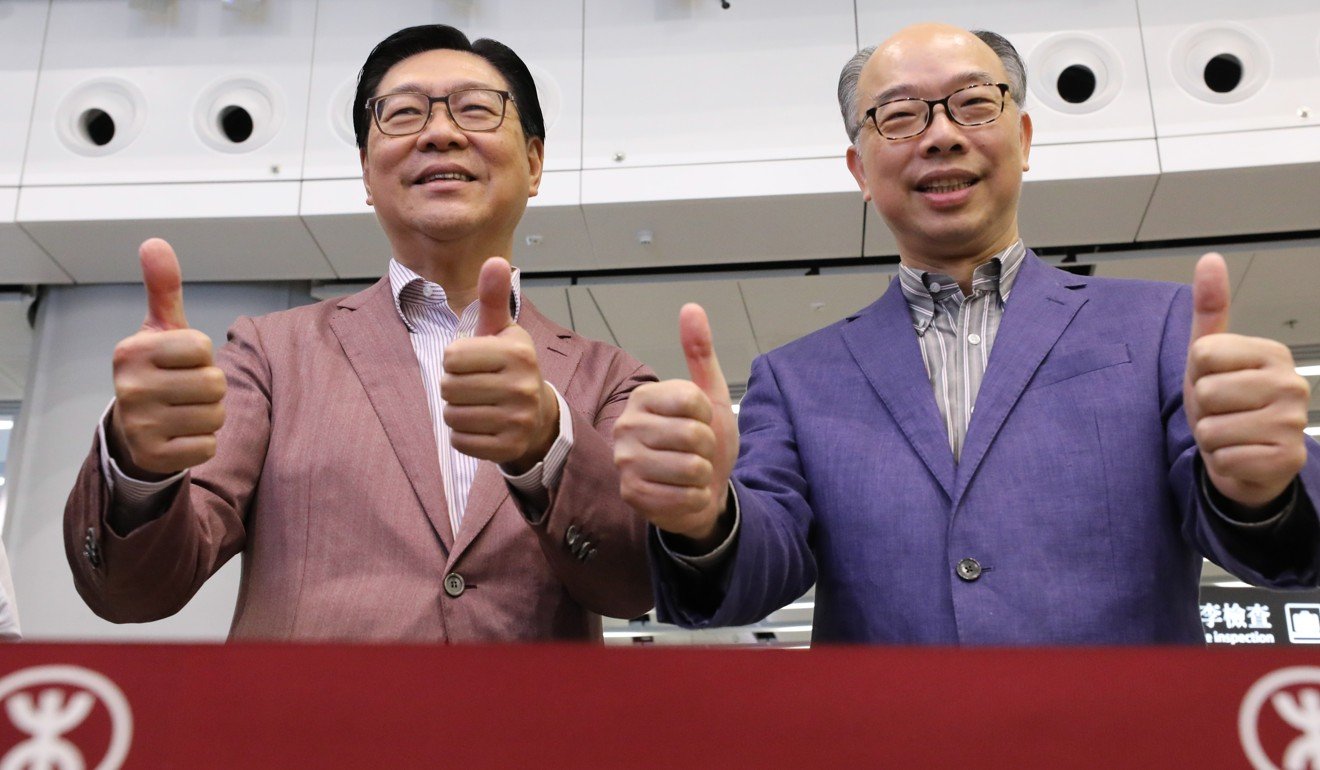
MTR Corp staff had made arrangements with China Railway Corp, under which passengers were led directly to trains. Their tickets would be checked properly upon arrival at mainland destinations, Lau said. He did not say how long the special arrangement would be in place.
Many passengers ended up vexed by electronic ticket machines that would not dispense tickets for certain times. Some machines were intended for on-the-day purchases only and others for advance buyers, but many were unaware of that, and were queuing at the wrong machine.
A source said the issue originated from a bug in the electronic system, but ground staff said it was a deliberate crowd-control measure.
By about 1.30pm, four of 39 ticketing machines were not in use. Railway staff had put up signs near machines, saying that some would only dispense tickets for journeys before 8pm, with others selling only tickets for journeys beginning from 8pm on Sunday to any time on Tuesday.
Most only took payment from credit cards and Octopus cards. The Post contacted the MTR Corp for comment.
Earlier in the day, transport chiefs had asked for travellers’ understanding.
Speaking in front of the departure gate before the line’s official opening, Hong Kong transport minister Frank Chan Fan called on the public to be more tolerant and supportive of the line.

“I hope the patronage and the popularity will get better day by day,” he said.
“It takes 18 years to nurture a fine man and now, 18 years from the conception of the idea, the express rail is finally born, marking the beginning of a new life. I hope the passengers today can taste its speediness, stability and comfort.”
MTR chairman Frederick Ma Si-hang also called for public understanding over any teething problems during the line’s initial stages.
Ma himself fell victim to such glitches, when he tried to buy food using an automated machine at the terminal. The machine malfunctioned, leaving him hungry.
Meanwhile, the first direct high-speed train to Guangzhou South station arrived at its destination at 10.55am, eight minutes later than scheduled. At least six of the 16 carriages of the first non-stop train were empty or nearly empty.
At 4am, only three rail enthusiasts, who had lined up from midnight, waited for the first glimpse of the much hyped line.
At the stroke of 5am, MTR Corp CEO Lincoln Leong Kwok-kuen, operations director Lau and managing director Jacob Kam Chak-pui conducted a brief ceremony at exit D, welcoming the first batch of visitors.
Simon Lau, 25, a fast-food shop worker, and Tony Chan, 32, who works for a computer company, both claimed to have been first to arrive at the terminal. Another rail fan, Tony Tang, 31, a warehouse worker, came third.
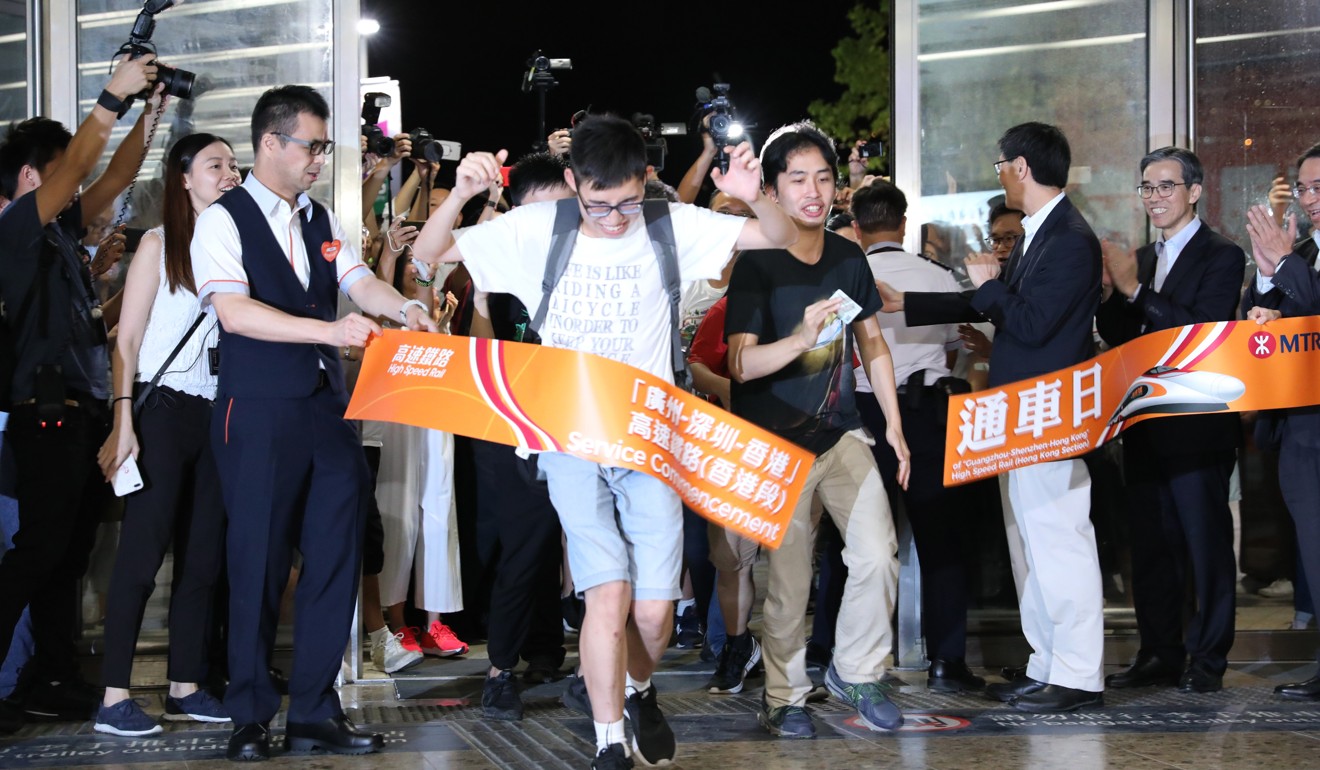
“I am very nervous. I didn’t have any sleep,” Simon Lau, who lives in Tuen Mun, said. “It was a pity that I couldn’t get the first train ticket so I came here early just to witness the opening ceremony.”
Tony Chan was luckier. He managed to buy the first train ticket, for 7am.
“I came here so early because I want to familiarise myself with the environment,” he said. “I would like to examine the co-location arrangement to see if it really works.”
The delays, costs and rows that hit Hong Kong’s cross-border express train
She also revealed that Wang Zhigang, the Chinese minister of science and technology who was in the city for the expo, would later take the newly opened line to Guangzhou.
On Sunday evening, Lam said she was “overall” satisfied with the first day of rail operations.
“I note there were still some teething problems. But for such a large infrastructure project, especially a cross-border one, not all problems can be dealt with by us alone,” Lam said.
“The ticketing system involves the [mainland side]. MTR staff ... will review and see what improvements can be made in future.”




